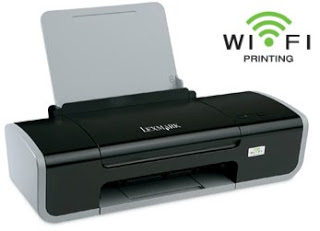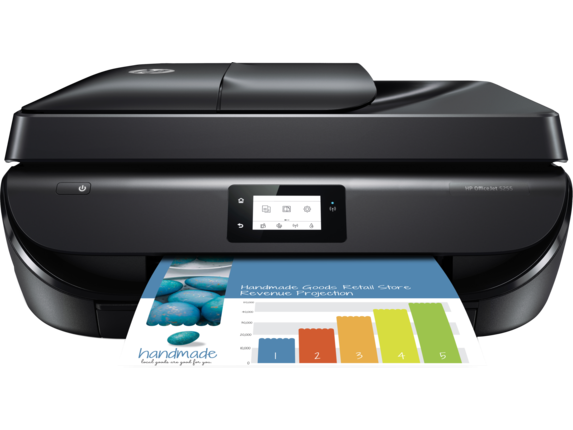Although wireless printing is not a new technology, some people still don’t know much about it, not to talk about knowing how it works. Most of the questions you might want to ask about wireless printing have been answered in this post.
What is a Wi-Fi Printer?

Wireless printers do not need cables for connection. It’s that simple. The only form of wired connection is the power cord, so printing from any device is done wirelessly, and these printers can connect to computers and mobile devices.
The use of these printers is unlimited in offices where it takes lots of trouble moving printers from a place to the other to make it accessible. Anyone can print documents comfortably from anywhere in the office without transferring the printer.
Benefits of Wireless Printing

You may not know these benefits of wireless printing, but a few of them are:
Clutter-free: No more littering of cables as you go wireless avoiding the stress of having to rearrange wires every time.
Straightforward setup: One of the reasons why people don’t use new technologies is knowing the setup process. Connecting through Wi-Fi is easy, and most people can set it up in no time. You’ll learn the setup process later in this post.
Share printers and lower printing costs: Office in the past used to invest in multiple printers in order to provide a printer for each worker. This way, more money is spent on printers, but this can now be averted by using a wireless printer that can be used by the entire office with just a Wi-Fi connection.
Print from anywhere: Apart from multiple use, these printers enable you to print even when you are not in the room. As long as you are within the range of the Wi-Fi, you’ll be able to transfer your documents to the printer, and it will print it out immediately. All you need to do is pick up your printed document when you get to the room.
Independent of computers: Wireless printers do not only work when connected devices are turned on. Anyone can print documents without depending on other devices. Only connected devices can send materials to the printer, so you don’t need to worry about connection when other devices are not within range.
Save money on cables: You save money used in buying cables for connection. It may seem like a minimal benefit, but the cost of cable installation can accumulate within a period of time and amount to big expenses. Using wireless printers saves money and the time spent when plugging.
The benefits of using a wireless printer are not limited to the listed above. One of them is the reduction in the number of workers as jobs become easier. There is also a reduction in expenses and overall efficiency.
How do Wi-Fi Printers Work?
You might be wondering; how can a printer work wirelessly? It is not rocket science, as the wireless printer enables connection through Wi-Fi. The printer connects the same you connect to the internet. In an office where the router is used for the internet, users can connect seamlessly and be able to send documents to the printer through Wi-Fi. In a building where the connection is strong, anyone within range can print documents as long as they are able to transfer them to the printer.
Wi-Fi makes it easy for devices to connect to the printer.
Setting up a Wi-Fi Printer
When you purchase a wireless printer, the manufacturer will provide a manual guide to show the setup process for the model you bought. You can contact them if you find it difficult, and the help center would come to your aid. However, the steps in setting up Wi-Fi printers are not different from each other. The difference is usually in the names given to the menus on each model or brand. This is where the manual guide comes into play, as you would need to check the relative information.
The following steps show how to set up a Wi-Fi printer
- Connect your printer to the socket to power it, then switch it on.
- Also, switch on your Wi-Fi router and keep it at a range that the printer can get connected.
- The menu on your printer will be used to change the setting to suit your needs. All you need to do is press on the ‘settings’ menu, then ‘setup,’ from here navigate to ‘network,’ and you would be able to connect to the Wi-Fi. Note that the menu on your printer may differ slightly from this.
- The next step is for the printer to search for available networks to connect to. There is a screen on your printer, and you can see how the search is going. Follow the prompt instruction when the printer finds a network.
- The prompt instruction would require you to press your printer’s WPS button, do so.
- You are set to start printing wirelessly.
You can edit the settings on your printer, as shown on the screen. The main step is shown above; after that, you would need to connect the printer to the laptops or desktops in the office so that the users can access the printer. You can install your printer by automating the setup process on the printer’s CD. Do this, and you are good to go.
In the case of printing from a mobile device, you will go through a different setup process. The WPS button is also used to connect to mobile devices, but in case your printer doesn’t have, you have to check the instruction guide that comes with it to see how to go about it. Also, in a situation where setting up your network is complicated, you need to contact your network administrator for guidance.
Range of Wi-Fi Enabled Printers
Many technology manufacturers are producing wireless printers with brands and models, ranging from cheap to expensive. Notable manufacturers like Dell, HP, Brother, and Canon are releasing affordable printers that can be bought for £71 and above. The more advanced wireless printers produced, the more Wi-Fi would become a necessity in every device.